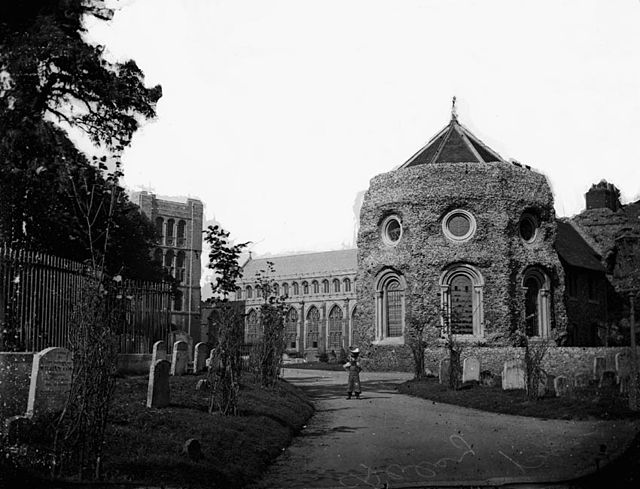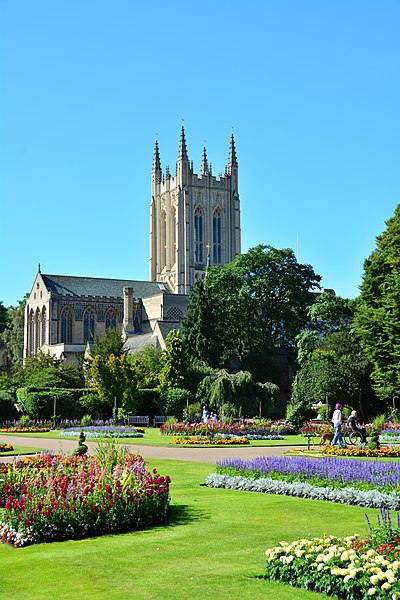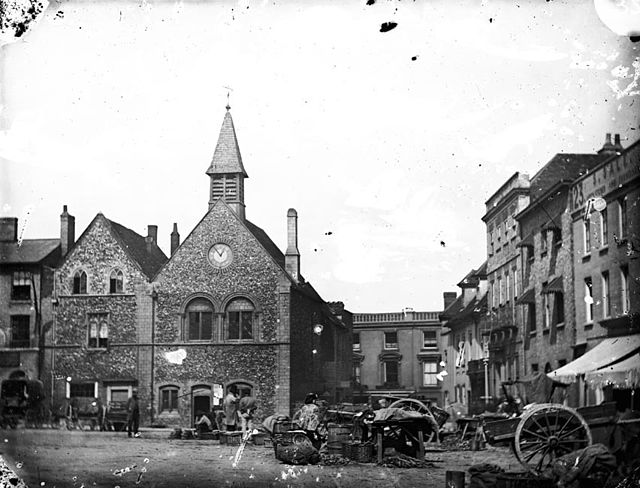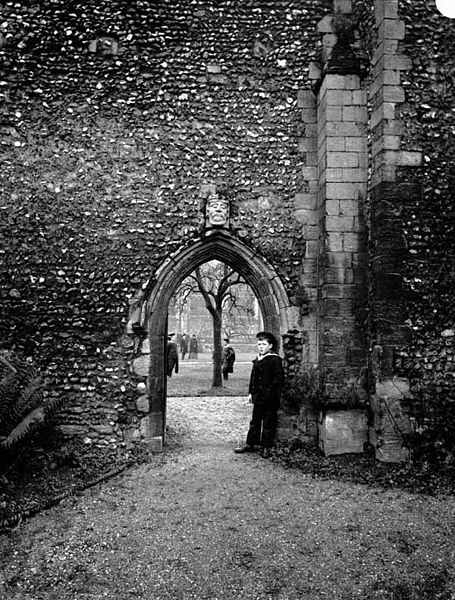The Abbey of Bury St Edmunds was once among the richest Benedictine monasteries in England, until its dissolution in 1539. It is in the town that grew up around it, Bury St Edmunds in the county of Suffolk, England. It was a centre of pilgrimage as the burial place of the Anglo-Saxon martyr-king Saint Edmund, killed by the Great Heathen Army of Danes in 869. The ruins of the abbey church and most other buildings are merely rubble cores, but two very large medieval gatehouses survive, as well as two secondary medieval churches built within the abbey complex.
The Norman Tower, a gateway and bell tower in front of the new cathedral tower
The Abbey ruins, Bury St Edmunds
View of churchyard and (L-R) Norman Tower, St James Church and SW Tower of Abbey, c. 1920
North transept of the Abbey
Bury St Edmunds, commonly referred to locally as Bury, is a historic market and cathedral town and civil parish in the West Suffolk district, in the county of Suffolk, England. The town is best known for Bury St Edmunds Abbey and St Edmundsbury Cathedral. Bury is the seat of the Diocese of St Edmundsbury and Ipswich of the Church of England, with the episcopal see at St Edmundsbury Cathedral. In 2011 it had a population of 45,000.
St Edmundsbury Cathedral
Illumination of the arms of Bury St Edmunds (British Library)
Early view of Moyses Hall, today Moyses Hall Museum
View of gate, Bury St Edmunds Abbey, c. 1920








